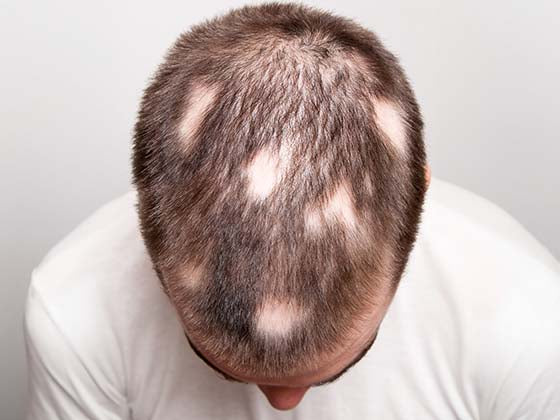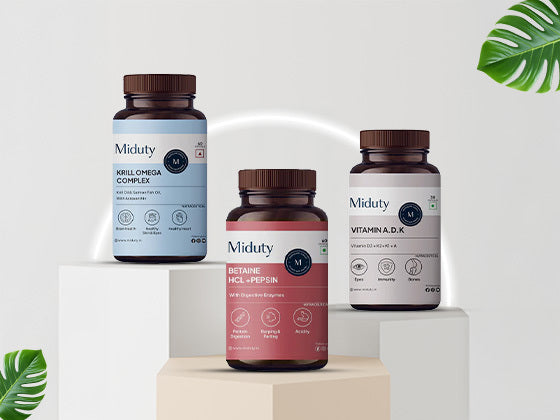- Working of Glycolic Acid
- Glycolic Acid For Underarms
- AHAs & Skin Renewal
- Glycolic Acid for Exfoliating Armpits
- Treating Underarms Pigmentation
- Odour & Sweat Management
- Considerations While Using Glycolic Acid
- Glycolic Acid & Skin Irritation
- FAQs
Glycolic acid, a skincare superpower, is gaining popularity for an unexpected new application—armpit care. Long associated with exfoliating and skin-lightening on the face, glycolic acid is now being touted as a game-changer for armpits. From lightening dark underarm discoloration and reducing body odor to smoothing overall skin texture, this alpha hydroxy acid (AHA) is becoming a hot ingredient in body care regimens. With issues such as underarm discoloration, clogged pores, and irregular texture plaguing most people, glycolic acid is one gentle yet effective solution for exfoliating dead skin cells and stimulating cell turnover. Everyone from dermatologists to social media is abuzz with its multi-tasking advantages, but is it actually the miracle product for smooth, glowing underarms—or simply a skincare craze? Here, we discuss the science, advantages, and warnings of applying glycolic acid in underarm treatment.
Understanding Glycolic Acid and Its Skin Effects

Knowing how glycolic acid functions and its effect on the skin is paramount to applying it safely and optimally. Though this AHA provides remarkable benefits—such as evening out lackluster skin, fading hyperpigmentation, and softening rough texture—it's nonetheless a strong chemical exfoliant whose application must be done with caution. Misuse or overapplication can cause irritation, redness, or damage to the skin barrier, particularly on sensitive spots such as underarms. Understanding the correct concentration, frequency, and how to blend it with other products guarantees you achieve results without side effects. It also helps to understand where glycolic acid fits for your skin type and what you want to achieve, whether it's addressing dark underarms, ingrown hair, or skin tone overall. With growing popularity with body care, educated use maximizes its positive effects and reduces risks—making it a trend, yes, but also an intelligent, science-supported choice for your routine.
What Is Glycolic Acid and How Does It Work?

Glycolic acid is an alpha-hydroxy acid (AHA) sugar-cane based that is popular across the beauty and skincare communities due to its excellent exfoliating abilities. Owing to its tiny molecule structure, glycolic acid seeps through skin well and has become the preferred option in clearing acne, dullness, discoloration, and anti-aging indications. It's generally included in cleansers, toners, serums, and chemical peels, and works well with almost all types of skin provided that it's properly used.
-
Penetrates deep into the skin because of its tiny molecular size
-
Breaks bonds between dead skin cells, facilitating exfoliation
-
Triggers cell turnover, exposing brighter, fresher skin beneath
-
Fades dark spots and hyperpigmentation with continued use
-
Unclogs pores and prevents acne by clearing away excess oil and debris
-
Increases collagen production, firming and smoothing the skin
-
Increases the absorption and efficacy of other skincare products
-
Reduces fine lines and wrinkles with consistent use
-
Enhances overall complexion and glow with repeated use
-
Fosters smoother skin through gentle smoothening of rough areas and keratosis pilaris
In short, glycolic acid is a do-it-all skincare product that exfoliates, rejuvenates, and stimulates the skin internally. With repeated application and proper development, it can dramatically enhance texture, clarity, and brightness, hence its use in many skincare regimens.
Why Is It Gaining Popularity in Underarm Skincare?

Over the past few years, glycolic acid has been all the rage in underarm skin care, and for a very good reason. As individuals become more aware of skin color, texture, and body odor control in sensitive areas, this mild exfoliant has become a safe but effective answer. With its multitasking action—exfoliating, whitening, and deodorizing—it has found itself at the top of lists of underarm skin care must-haves.
-
Glycolic acid exfoliates dead skin in the underarm region, allowing for softer, smoother skin and minimizing buildup which can result in dullness or rough texture
-
It gradually eliminates pigmentation and dark spots caused by typical issues such as friction, shaving, or product reaction, resulting in brighter and even-toned underarms in the long term
-
The acid's pore-unclogging and sweat-reducing abilities help manage body odor naturally, lessening the dependence on harsh antiperspirants or alcohol-based deodorants
-
With its cell turnover boost, glycolic acid helps maintain healthier skin rejuvenation, particularly useful in areas that are prone to ingrown hairs or razor bumps or wax bumps
-
It can enhance product penetration, enabling other calming or moisturizing ingredients in your regimen to be more effective and last longer
-
Glycolic acid assists in preserving the skin's natural pH level, providing an environment that discourages bacterial overgrowth that causes long-term odor
-
When applied regularly in the proper concentration, it offers a chemical exfoliation option to harsh physical scrubs, minimizing the risk of microtears or irritation
-
It flatters a neater and groomed appearance, which suits people who prefer clean beauty, simplicity, or making the switch to natural deodorants
All in all, glycolic acid's popularity in underarm skincare is rooted in its non-irritating yet potent effects—it addresses several issues without being harsh. As more people look for clean, multitasking products for body care, glycolic acid remains a skincare staple outside of the face.
The Role of AHAs in Skin Renewal

Alpha Hydroxy Acids (AHAs) is a classification of naturally occurring acids, often included in skincare products to revitalize the skin's surface. Present in products such as glycolic acid, lactic acid, and citric acid, AHAs are celebrated for their capacity to exfoliate and encourage skin regeneration. By breaking down the connections between old skin cells, they permit newer, healthier skin to break through—making them an integral component of contemporary skincare routines.
-
Break up the bonds that keep dead skin cells on the surface
-
Encourage gentle exfoliation without physical scrubbing
-
Stimulate collagen formation to enhance skin firmness
-
Help to erase dark spots, sun damage, and hyperpigmentation
-
Even out rough texture and reduce fine lines
-
Enhance overall skin tone, clarity, and radiance
-
Facilitate absorption of other active skincare ingredients
-
Assist in unclogging pores, lessening acne and congestion
-
Support accelerated skin turnover, revealing youthful skin beneath
-
Increase levels of hydration by drawing in moisture to the skin
Overall, AHAs are a critical part of the skin's regeneration process because they speed up the natural exfoliation process while also improving the texture and color of the skin. Using AHAs on a regular basis can result in improved, softer, and healthier-looking skin—meaning they're a must-have ingredient in any comprehensive skincare routine.
Benefits of Using Glycolic Acid for Armpits

Applying glycolic acid to your underarms can provide a variety of focused benefits beyond normal deodorants or exfoliants. The main benefits are:
-
Decreases Hyperpigmentation – Glycolic acid reduces dark spots and discoloration by speeding up cell turnover and shedding pigmented dead skin cells.
-
Exfoliates Dead Skin – It dissolves the surface layer of dead skin gently, keeping pores unclogged and underarms smoother and brighter.
-
Reduces Body Odor – Clearing dead skin that traps bacteria, glycolic acid naturally reduces odor.
-
Reduces Ingrown Hair – Regular exfoliation diminishes the possibility of ingrown hairs upon shaving or waxing.
-
Soothes Skin Texture – Through use, skin around the armpits becomes smooth, more uniformly toned, and visibly revitalized.
These advantages make glycolic acid a multi-tasking addition to underarm care, particularly for those who want to treat pigmentation, roughness, and odor without abrasive scrubs.
Exfoliation and Smoother Skin Texture

Glycolic acid is a powerhouse exfoliant that takes center stage in enhancing skin texture and smoothness. Being the smallest and most penetrative alpha hydroxy acid (AHA), it functions effectively on the surface and below the skin to rejuvenate and refine. Its capacity to break down dead skin cells and invigorate cell turnover places it squarely as an excellent ingredient for smoother, brighter, and more even-toned skin.
-
Glycolic acid dissolves the "glue" that keeps dull, dead skin cells clinging to the surface, so they can naturally slough off
-
It encourages increased cell turnover, which brings fresher, more luminous skin to the surface
-
Daily use of glycolic acid keeps the appearance of rough areas and uneven texture at bay
-
It fades post-acne marks and dark spots by shedding discolored surface cells gradually
-
The acid also unclogs pores and prevents clogging, adding up to a smoother skin surface
-
It enhances light reflection on the skin, making it look brighter and more polished
-
Glycolic acid fosters collagen production, which improves firmness in the skin and minimizes textural irregularities
-
It prepares skin to absorb moisturizers and treatments better, improving overall skin softness and hydration
-
Its gentle chemical exfoliation is safer for long-term use than harsh physical scrubs
-
With repeated use, skin is seen to visibly become smoother, more supple, and younger-looking
By gently yet effectively removing dead cells and smoothing out skin texture, glycolic acid provides a potent but mild exfoliation that renews dull, rough skin to become a smoother, brighter, and healthier-looking surface.
Reduction in Pigmentation and Discoloration

Glycolic acid is most commonly used to decrease pigmentation and skin coloration by encouraging regular and effective exfoliation. Being an alpha hydroxy acid (AHA), it acts on the surface of the skin to remove pigmented, damaged cells while stimulating new, even-colored skin to form underneath. Because of this, it is a top choice ingredient for addressing dark spots, sun spots, and post-inflammatory hyperpigmentation.
-
Glycolic acid peels away the surface skin, removing pigmented and damaged cells
-
Accelerates cell turnover in the skin, which quickly fades dark spots and blotches
-
Penetrates deeply into the epidermis, going after pigment deposition at the roots
-
Breaks up melanin clusters responsible for discoloration and patchiness
-
Favors the appearance of new, evenly pigmented skin over time
-
Ongoing use smooths out complexion by stopping dull, uneven cells from accumulating
-
Diminishes sunspots and age spots created through extended UV exposure
-
Makes brightening treatments more effective by unclogging surface congestion
-
Lessens post-acne marks by clearing remaining pigment that lingers following inflammation
-
Causes incremental and noticeable lightening without bleaching or irritation when applied appropriately
Essentially, glycolic acid is a mild but potent remedy for individuals who are battling pigmentation. Its regular use unveils a brighter, more even-toned complexion, making skin look brighter, healthier, and more radiant in the long run.
Odor Control and Sweat Management

Glycolic acid is also finding acceptance not only for facial skin care but also for its unexpected uses in body care—most notably in controlling body odor and sweat. Its antibacterial and exfoliating qualities make it a potent natural alternative to conventional deodorants, particularly for individuals looking for a mild, fragrance-free remedy for underarm issues.
-
Glycolic acid reduces the pH level of the skin, producing an environment that discourages the growth of bacteria responsible for causing odor
-
By removing dead skin cells through exfoliation, it eliminates buildup where bacteria like to live, diminishing the source of odors
-
It keeps sweat glands unclogged, enabling healthier sweat regulation without clogging them up like antiperspirants do
-
The acid lightly decreases sweat output over time by keeping pores clear and lowering excess sebum
-
Its antimicrobial activity keeps the area feeling fresher throughout the day, even in hot or humid weather
-
Unlike traditional deodorants, glycolic acid does not cover up odor—it destroys the source at its microbial origin
-
It can be used in combination with natural deodorants to boost efficacy without irritation
-
Glycolic acid inhibits the accumulation of residues from deodorants and shaving, which can harbor bacteria
-
Regular application keeps the underarm skin balanced, clean, and less susceptible to inflammation
-
It's safe for sensitive skin when applied in low strengths and followed by adequate hydration afterward
Overall, glycolic acid is a groundbreaking, skin-safe solution for individuals seeking to control body odor and sweat naturally. Its capacity to attack bacteria, gentle exfoliation, and promotion of skin health make it a great addition to contemporary underarm care products.
Expert Tips and Precautions Before You Start

Prior to adding glycolic acid to your underarm regimen, it is critical to adhere to expert-recommended advice to ensure safe and optimal use:
-
Start Low and Slow – Start with a low concentration (5–7%) so that your skin can acclimatize. Use 2–3 times a week at first, then as tolerated.
-
Do a Patch Test – Patch test on a small patch of skin first to test for irritation, particularly on sensitive underarm skin.
-
Use on Clean, Dry Skin – Only apply glycolic acid on freshly cleaned, dry underarms to avoid stinging.
-
Skip Right After Waxing or Shaving – Use at least 24–48 hours after shaving or waxing to prevent additional sensitivity or burning.
-
Use Sunscreen – Though armpits are not normally sun-exposed, glycolic acid enhances photosensitivity in skin—so use sunscreen when wearing sleeveless clothing.
-
Moisturize After Use – Afterward, use a mild, fragrance-free moisturizer to keep the barrier healthy and calm the skin.
With these precautions, you can use the skin-brightening and exfoliating effects of glycolic acid safely on your underarms.
Suitable Skin Types and Patch Testing

Glycolic acid works very well, but like all active ingredients, it's not universally effective for all skin types without precautions. Knowing how sensitive your skin is and how well it reacts to glycolic acid is vital to prevent irritation or unwanted side effects. This is why it is so important to find the right skin types and to carry out a patch test prior to full use.
-
Glycolic acid is typically most appropriate for normal, oily, and combination skin types that can handle active exfoliants
-
Sensitive or dry skin types can become red, sting, or peel when used without carefulness or hydrating support
-
Patch testing predicts how your skin will respond to glycolic acid, avoiding the risk of an allergic or irritation reaction
-
It's particularly necessary for eczema, rosacea, or impaired skin barrier users to test first for regular use
-
A little should be applied behind the ear or on the inside of the arm for 24–48 hours to check for any negative reactions
-
Overuse or beginning with high strengths may interfere with the skin's moisture barrier and lead to long-term sensitivity
-
Gradual introduction allows the skin to acclimatize, beginning with low strengths and gradually increasing if necessary
-
People with darker complexions need to use glycolic acid cautiously, as excessive use can lead to post-inflammatory hyperpigmentation
-
Sunscreen use is essential after the application of glycolic acid, as the skin will be more susceptible to sun sensitivity
-
Dermatologist recommendation is recommended when adding glycolic acid to a routine, particularly in combination with other actives
In summary, glycolic acid provides remarkable advantages but needs to be balanced with your skin's tolerance. Patch testing and careful use guarantee safe, effective outcomes without damaging the skin's health or integrity.
Frequency of Use and Product Selection

Glycolic acid will radically enhance skin tone, texture, and clarity, but only when it is used at the correct frequency and in the appropriate product. Selecting the proper product and knowing how often to use it is paramount to preventing over-exfoliation, irritation, or cumulative barrier loss, particularly among new users or people with sensitive skin.
-
To begin with lower concentrations (5–7%) is perfect for novices to allow the skin to develop tolerance without overloading it
-
Frequency should start at 1–2 times per week and increase depending on the response of the skin
-
Excessive use may result in skin sensitivity, dryness, flakiness, and risk of irritation or sunburn
-
Product choice should be for skin type—light toners or cleansers for oily skin, and hydrating creams or serums for dry skin
-
Application at night is best because glycolic acid boosts photosensitivity and is most effective when the skin is in repair mode
-
Layering with other actives or exfoliants (such as retinol or salicylic acid) is best avoided except under professional guidance
-
Using products containing calming ingredients such as aloe vera, niacinamide, or hyaluronic acid will counteract possible irritation
-
Choosing pH-balanced products maximizes efficacy and reduces skin barrier disruption
-
Patch testing and easing in the use of glycolic acid in your regimen decreases the likelihood of reactive responses
-
Sunscreen is not optional when applying glycolic acid, as it makes the skin more susceptible to UV damage
In the end, good frequency and careful product choice are what make all the difference in getting safe, noticeable results from glycolic acid. A gradual, consistent approach customized to your skin type guarantees long-term skin health and radiance.
Potential Irritation and When to Avoid It

Although glycolic acid has amazing skincare benefits, it is nonetheless a powerful active ingredient with the potential to irritate skin—particularly if it's overused or used on sensitive skin. Knowing how to avoid using it and treat reactions when they happen is vital for preserving the barrier of your skin and promoting overall skin well-being.
-
Tingling, redness, flaking, or stinging, particularly with first-time use or excessive application
-
Sensitivities or broken skin on the face and body should take care or stay away from glycolic acid
-
Application after shaving, waxing, or other exfoliating treatments increases irritation
-
Treatments mixed with retinoids, benzoyl peroxide, or harsh actives without professional direction can cause enhanced inflammation and damage to the barrier
-
Over layering or use of high strength can upset the moisture balance in the skin and cause dryness and sensitivity
-
More likely to happen in dry or dehydrated skin types if not followed up with good hydration and barrier repair
-
People with darker skin should refrain from overusing, as it can lead to post-inflammatory hyperpigmentation
-
Do not apply glycolic acid to sunburned, peeling, or injured skin to avoid further irritation
-
Discontinue product and replace with soothing ingredients such as aloe vera or ceramides if irritation is noticed
-
Dermatologist consultation is recommended prior to use of glycolic acid during active breakouts, inflammatory dermatoses, or pregnancy
In summary, though glycolic acid can be a game-changer for the skin when applied properly, it needs to be handled with care in some situations. Being aware of when to stop or even avoid it at all costs ensures your skincare regimen remains safe, effective, and conducive to your skin's own resilience.
Personalizing Your Underarm Routine with Glycolic Acid

Glycolic acid has proven to be a strong but mild option for those seeking to take their underarm care routine to the next level. Whether you're focusing on pigmentation, texture, or smell, adding this AHA can get you smoother, clearer, and more even-toned underarms with continued use. As with any skincare product, though, its success will be determined by how well it works for your individual skin type and needs. Individualizing your strategy—by varying the concentration, frequency, and coupling with calming moisturizers—will deliver optimal benefits without irritation. Being consistent and patient is also essential since change takes time to take place in the skin. Provided the exfoliating balance and nurturing attention, glycolic acid can become a break-through product on your list—not merely for its cosmetic benefit but also for healthy skin and self-assurance. Always tune in to your skin and make small changes to discover what works for you.









































